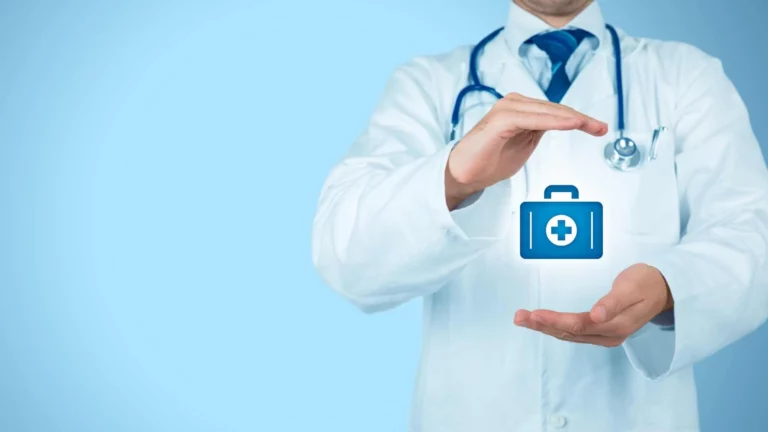Table of Contents
Emergencies are unpredictable. From sudden storms and power outages to medical emergencies and natural disasters, life can throw unexpected challenges your way at any moment. The good news is that with proper planning, you don’t need to panic or overspend. Building an emergency kit in phases ensures that you can stay prepared without breaking your budget, and that every item you buy is practical and useful.
Many households make the mistake of either overbuying in a single purchase or spreading items out haphazardly, which can leave critical gaps in preparedness. A phased approach allows you to prioritize essentials first, gradually expand your kit, and allocate your spending wisely over time. This method ensures your family has what they need when an emergency strikes, without financial strain.
In this guide, we will walk you through the phased essentials of building an emergency kit, how to prioritize spending, and strategies to maintain readiness over time. By following this approach, you can confidently protect your household while keeping costs under control.
Understanding the Basics of an Emergency Kit
An emergency kit is more than a collection of items—it’s a strategic plan for survival, comfort, and continuity during unforeseen events. The kit should cover the essentials for your family’s health, safety, nutrition, and communication needs while being adaptable to different emergency scenarios.
Your emergency kit should be tailored to your household size, geography, and common risks. A family in a hurricane-prone area will have different needs than someone in a region susceptible to winter storms or earthquakes. Focusing on practicality and durability ensures that each item serves a purpose and can withstand extended use.
A well-planned kit also reduces stress during an emergency. Knowing that water, food, first aid, and critical supplies are available provides peace of mind and helps you respond calmly. For many households, starting with a phased approach is the most manageable and cost-effective strategy.
Assessing Your Needs
Before purchasing any items, it’s important to evaluate the specific needs of your household. Consider the number of family members, ages, medical conditions, and any pets. Children and elderly family members may require specialized supplies such as medications, formula, or mobility aids.
Next, examine your geographic location and the types of emergencies most likely to occur. Coastal regions may need hurricane preparedness, while areas prone to power outages require backup lighting and communication tools. Understanding these risks helps prioritize purchases and ensures that critical needs are met first.
Finally, consider storage and accessibility. An emergency kit should be organized in a way that items are easy to find and use. Assess available space in your home, and plan for items that are portable in case evacuation is necessary. Taking time to assess needs upfront prevents unnecessary spending and helps maintain a practical, functional kit.
Setting a Budget
One of the most important aspects of emergency kit preparation is establishing a budget. Emergency kits don’t need to be built all at once, and spreading purchases over time allows for better financial management.
Begin by determining how much you can reasonably allocate toward your kit without compromising other essential household expenses. Break down the budget into categories such as water, food, medical supplies, tools, and backup power. Using budgeting tools like spreadsheets or apps helps track spending and ensures you stay within your financial limits.
A phased budget approach ensures that critical items are acquired first, while less essential or luxury items can be added gradually. This method reduces the likelihood of overspending and allows for thoughtful, deliberate purchases that maximize the utility of each item.
Beem Tie-In: Beem’s AI Wallet makes money check-ins easier by automatically showing you where your money goes. Instead of scrolling through confusing transactions, you get clear insights into your spending patterns.
Phase 1 – Immediate Essentials
Phase 1 covers items necessary for immediate survival, typically for the first 24–72 hours of an emergency. These items focus on water, food, basic first aid, lighting, and essential communication tools.
Prioritizing these essentials ensures that your household can survive initial disruptions without stress or last-minute shopping. Cost-effective purchases such as long-lasting canned foods, water storage containers, and multipurpose first aid kits are foundational.
This phase should also include basic tools like flashlights, batteries, multi-tools, and a battery-powered radio. Investing in durable, high-quality essentials at this stage ensures you have the items that matter most when an emergency strikes.
Water and Hydration
Water is the most critical resource during any emergency. The recommended guideline is one gallon per person per dayfor drinking and basic sanitation.
Affordable options include stackable water containers, portable water filters, and water purification tablets. Rotating stored water every six months ensures freshness and safety. Consider small, portable bottles for evacuation scenarios to make water readily accessible on the go.
Water should be stored in cool, dark locations to prevent spoilage, and labeling containers with refill dates helps maintain rotation schedules efficiently.
Food and Nutrition
Non-perishable, calorie-dense foods are essential for survival. Canned goods, dried fruits, nuts, energy bars, and ready-to-eat meals provide necessary nutrition without refrigeration.
Meal planning is crucial. Stocking items that can be combined into balanced meals reduces waste and ensures proper nutrition. For families with infants or dietary restrictions, include formula, baby food, or specialty items as needed.
When shopping for Phase 1, prioritize affordable and high-utility items. Bulk purchases often reduce cost per unit while ensuring your family has sufficient food for several days.
First Aid and Basic Tools
A well-stocked first aid kit should include bandages, antiseptic wipes, pain relievers, gauze, tape, and basic medications. Multipurpose tools, such as pocket knives and multi-tools, also play a critical role during emergencies.
Flashlights, extra batteries, and a battery-powered or solar radio are indispensable for communication and navigation. Investing in durable, high-quality tools ensures functionality in prolonged emergencies.
Keeping items organized in labeled containers makes it easy to access them quickly during a crisis, reducing stress and improving response efficiency.
Phase 2 – Short-Term Survival & Comfort
Phase 2 focuses on items that allow your household to sustain comfort and basic living needs for three to seven days. This includes additional clothing, blankets, hygiene products, and backup power solutions.
These items bridge the gap between immediate survival and longer-term preparedness. Balancing comfort with practicality helps maintain physical well-being and morale during extended disruptions.
Multipurpose items, such as insulated blankets that also function as emergency shelters, are cost-effective and reduce the need for multiple purchases.
Clothing and Shelter
Extra clothing should accommodate seasonal weather, layering, and waterproof options. Include sturdy footwear and accessories like hats or gloves as needed.
Compact blankets and tarps provide warmth and shelter in case of power outages, heating failures, or evacuation. Space-efficient storage solutions like vacuum-sealed bags help conserve room while keeping items accessible.
When selecting items, prioritize durability and versatility. Multipurpose clothing and shelter items ensure that you’re prepared without unnecessary expense.
Hygiene and Sanitation
Maintaining hygiene is critical for health, particularly in emergencies lasting multiple days. Stock toiletries such as soap, toothpaste, toilet paper, and hand sanitizer.
Portable sanitation solutions, like chemical toilets or reusable waste bags, are useful for extended power outages or evacuations. Organizing items in labeled kits allows quick access and prevents chaos during stressful situations.
Affordable options include travel-sized containers and refillable bottles, which reduce both initial cost and waste.
Backup Power and Lighting
Portable chargers, solar lamps, and battery packs ensure communication and safety when electricity is unavailable.
Reusable solutions, such as solar-powered lights and hand-crank radios, minimize recurring costs. When investing in backup power, consider devices that serve multiple purposes, such as lanterns that double as charging stations.
Phase 2 emphasizes sustainability and efficiency, ensuring comfort while maintaining cost-effectiveness.
Phase 3 – Long-Term Preparedness
Phase 3 addresses items necessary for one to two weeks or more of self-sufficiency. These include advanced medical supplies, specialized tools, extended food and water storage, and considerations for specific household needs.
This phase often represents the largest portion of cost and planning. Strategic purchasing over time ensures that spending is manageable while your household remains prepared for prolonged disruptions.
Specialized kits for children, pets, and elderly family members should be included to ensure everyone’s needs are met in extended emergencies.
Extended Medical Supplies
Include medications, prescription backups, extra first aid supplies, and other health-related items.
Store medications properly to maintain efficacy and rotate stock regularly to prevent expiration. Cost-effective solutions include bulk purchasing for non-perishable medications and coordinating with local pharmacies for refill options.
Labeling and organizing medical supplies ensures that critical items are easily accessible during emergencies.
Specialized Equipment
Tools for home repair, communication, and emergency situations are essential for long-term preparedness. Items such as fire extinguishers, utility knives, and emergency radios can significantly reduce risk and increase safety.
Prioritize items that serve multiple purposes to minimize cost while maximizing utility. For example, a multi-tool with cutting, prying, and opening functions replaces several single-purpose items.
Advanced planning ensures you can address structural, safety, and communication challenges during extended emergencies.
Food and Water Rotation
Long-term stockpiling requires careful planning to prevent waste and ensure freshness. Rotate food and water every six months, and maintain an inventory with expiration dates.
Include high-calorie, non-perishable items that provide essential nutrients. Consider freeze-dried foods or MREs for extended storage.
This strategy ensures your household can sustain itself for longer periods without relying on external resources, while maintaining a manageable budget.
Tips for Phased Spending and Cost Management
Prioritize Essentials First
Focus on items that are critical for immediate survival and health. Avoid purchasing non-essential items in the early phases.
Creating a tiered list of items allows you to allocate budget efficiently, addressing urgent needs before investing in comfort or specialty items.
Use Technology to Track Spending
Apps or spreadsheets can help monitor purchases, inventory, and budget allocation.
Tracking expenditures ensures you stay within budget, prevents duplication, and identifies gaps in your kit over time. Beem Budget Planner is an excellent tool to organize phased spending and maintain readiness without financial strain.
Buy Strategically
Take advantage of seasonal sales, bulk purchases, and multi-purpose items to reduce costs. Avoid overbuying, and consider reusable products for sustainability and long-term savings.
Incorporate Reusable Items
Invest in items like durable water containers, solar-powered chargers, and multi-purpose tools. These reduce recurring costs and minimize waste while ensuring that your emergency kit remains functional over time.
Beem Tie-In: Beem is an all-in-one financial self-care app that offers budgeting, saving, instant cash, and accountability tools, all designed to reduce stress and support balance.
FAQs on Emergency Kit Spending
1. How do I start an emergency kit if I’m on a tight budget?
Start with immediate essentials like water, non-perishable food, and first aid. Purchase items in phases, prioritizing what’s critical, and use cost-effective alternatives such as reusable containers and multipurpose tools.
2. How often should I check and rotate items in my kit?
Check your kit at least twice a year. Rotate food, water, and medications to prevent expiration. Ensure all items are functional and replace anything worn or outdated.
3. Can I phase purchases over time without compromising preparedness?
Yes. Start with Phase 1 essentials, then gradually add items for short-term and long-term survival. Phased spending allows you to budget efficiently without leaving critical gaps.
4. What are the most critical items for small households?
For smaller households, prioritize water, non-perishable food, first aid, flashlight, batteries, and essential medications. Customize based on household members’ needs, including children, elderly, or pets.
5. How do I balance cost and quality for long-lasting supplies?
Invest in durable, multi-purpose items that serve multiple functions. Compare prices, utilize sales, and rotate items properly to ensure longevity without overspending.
Conclusion
Building an emergency kit doesn’t have to be overwhelming or expensive. A phased approach lets you protect your household step by step—starting with immediate essentials, adding short-term survival items, and finally preparing for long-term emergencies.
With Beem, you can manage your spending smartly while building your kit. Features like instant cash access, a secure smart wallet, the Beem Card for spending and credit building, and a personal AI assistant help you plan purchases, stay within budget, and ensure your emergency kit is complete and cost-effective.
By prioritizing essentials, purchasing strategically, and leveraging smart financial tools, you can create a well-stocked emergency kit that protects your family without breaking the bank.
Download the Beem app today to manage your spending, plan purchases, and stay prepared for any unexpected situation.















































